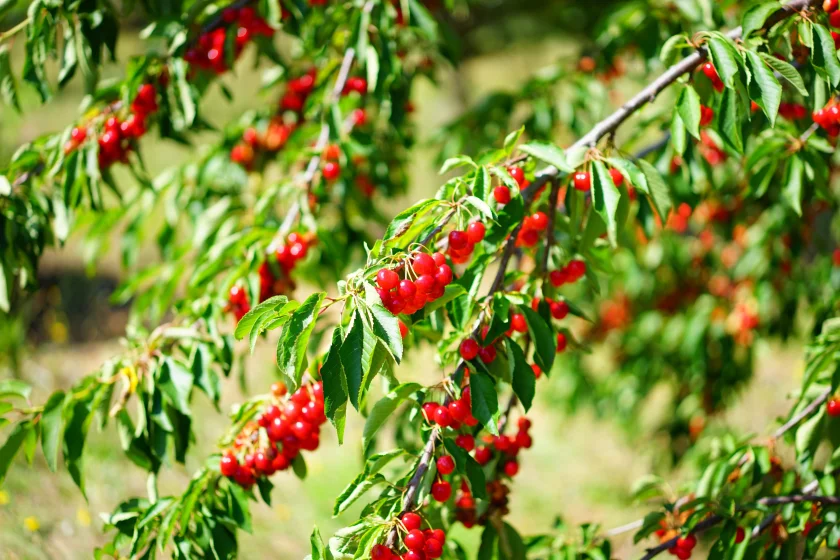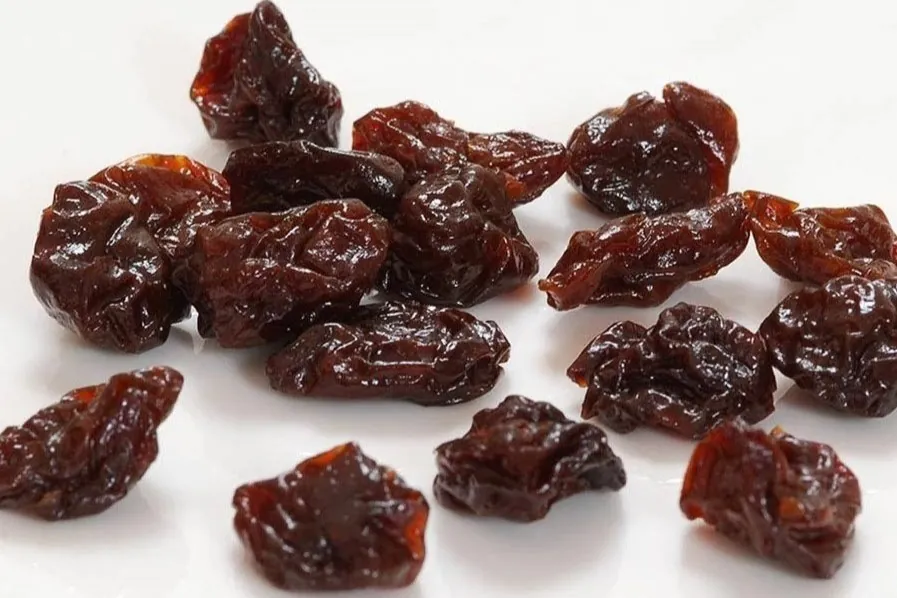1.1 Application of Dormancy Breakers and Bud Homogenizers
The orderly exit of plants from dormancy largely depends on the accumulation of winter chill (chilling hours), but also on the accumulation of heat (degree-days), which are responsible for advancing species phenology in spring and summer. Applying dormancy breakers will help orchards emerge more effectively from winter recession.
The main function of dormancy breakers is to anticipate and homogenize budburst, achieving tissue opening without needing to satisfy chilling hour requirements specific to each variety.
In seasons with greater accumulation of chilling hours starting from 7.2ºC, applications should be considered slightly earlier, aiming to homogenize late varieties. For early and mid-season varieties, the focus should be on advancing harvests, thus minimizing dormancy interruption and chilling accumulation until July 30.
The application of dormancy breakers allows us to advance harvest and, in other cases, enables us to implement strategies to stagger harvests.
Undoubtedly, we must apply a dormancy breaker to achieve concentrated and uniform phenology, which will allow us to be efficient with phytosanitary program applications and, of course, to obtain high-quality fruits, as lack of chill and accumulation of degree-days affect flower quality, influencing pollen quality and ovary formation, directly impacting fruit quality.
It is important to consider that advancing budburst also exposes us to potential cold damage issues, as winter frost events may affect more susceptible tissues. Therefore, any frost events shortly after dormancy breaker application would necessitate immediate frost control measures.
The doses and application dates for cyanamide depend on each variety and geographic area; however, field-specific evaluation is essential. The earliest application date should be when at least 70% of chilling hours have accumulated based on 7.2ºC, as per each variety's requirements.
The application of dormancy breakers is most critical when facing low winter chill accumulation, as it leads to reserve loss and lower quality flower buds, resulting in reduced pollen and ovule vitality, thus affecting fruit set.
2. Use of Hydrogen Cyanamide
Programs for using hydrogen cyanamide and other dormancy breakers, depending on varieties, are as follows:
| Variety | Product | Dose / 100 L | Application Date |
|---|
| Royal Dawn | Dormex or Cyanamide 50 | 1.5 L | July 15 |
| Santina, Frisco, Sweet Aryana | Dormex or Cyanamide 50 | 2 L | from July 15 to July 20, depending on the area |
| Tulare | Dormex or Cyanamide 50 | 1.5 L | from July 20 to July 25 |
| Lapins |
Dormex or Cyanamide 50 | 1.5 L | from July 20 to July 25 |
| Sonata |
Dormex or Cyanamide 50 | 2 L | from July 20 to July 25 |
| Bing | Dormex or Cyanamide 50 | 1.5 L | from July 25 to August 1 |
| Sweetheart |
Dormex or Cyanamide 50 | from 1.5 to 2 L | from July 25 to August 1 |
| Skeena | Dormex or Cyanamide 50 | 2 L | from July 25 to August 1 |
| Regina |
Dormex or Cyanamide 50 | from 2 to 2.5 L | August 1 |
| Kordia | Dormex or Cyanamide 50 | 2 L | August 1 |
| Areko | Dormex or Cyanamide 50 | 1.5 L | August 1 |
|
| Program 1: Use of hydrogen cyanamide to advance budburst. |
It is recommended to add a silicon-based surfactant such as Silwet (silicone surfactant) at doses of 20 cc/100L of water to the application of Dormex or Cyanamide 50 (hydrogen cyanamide).
It is important to remember that Dormex or Cyanamide 50 (hydrogen cyanamide) does not compensate for chilling hours under any circumstances; instead, it advances the accumulation of cold days early and acts with a caustic effect, burning and separating bracts from buds. This mode of action of the cyanamide-nitrate mixture means that it is crucial for coverage to be homogeneous and without run-offs to avoid dart toxicity.
In orchards with a high presence of bacterial cankers, silvering, or very weak trees, hydrogen cyanamide and/or any type of dormancy breakers SHOULD NOT be applied.
| Variety | Product | Dose / 100 L | Application Date |
|---|
| Royal Dawn | Dormex or Cyanamide 50 | 1.5 L | July 15 |
| Santina, Frisco, Sweet Aryana | Dormex or Cyanamide 50 | 2 L | from July 15 to July 20, depending on the area |
| Tulare | Dormex or Cyanamide 50 | 1.5 L | from July 20 to July 25 |
| Lapins |
Dormex or Cyanamide 50 | 1.5 L | from July 20 to July 25 |
| Sonata |
Dormex or Cyanamide 50 | 2 L | from July 20 to July 25 |
| Bing | Dormex or Cyanamide 50 | 1.5 L | from July 25 to August 1 |
| Sweetheart |
Dormex or Cyanamide 50 | from 1.5 to 2 L | from July 25 to August 1 |
| Skeena | Dormex or Cyanamide 50 | 2 L | from July 25 to August 1 |
| Regina |
Dormex or Cyanamide 50 | from 2 to 2.5 L | August 1 |
| Kordia | Dormex or Cyanamide 50 | 2 L | August 1 |
| Areko | Dormex or Cyanamide 50 | 1.5 L | August 1 |
|
| Program 1: Use of hydrogen cyanamide to advance budburst. |
It is recommended to add a silicon-based surfactant such as Silwet (silicone surfactant) at doses of 20 cc/100L of water to the application of Dormex or Cyanamide 50 (hydrogen cyanamide).
It is important to remember that Dormex or Cyanamide 50 (hydrogen cyanamide) does not compensate for chilling hours under any circumstances; instead, it advances the accumulation of cold days early and acts with a caustic effect, burning and separating bracts from buds. This mode of action of the cyanamide-nitrate mixture means that it is crucial for coverage to be homogeneous and without run-offs to avoid dart toxicity.
In orchards with a high presence of bacterial cankers, silvering, or very weak trees, hydrogen cyanamide and/or any type of dormancy breakers SHOULD NOT be applied.
| Variety | Product | Dose / 100 L | Application Date |
|---|
Brooks
Royal Dawn
Santina | Dormex or
Cyanamide 50 | from 1.5 to 2 L
from 1.5 to 2 L | July 15-20 |
| Siberian | 5 L | July 25 |
| Erger | 5 L |
| Light Up | 5 L |
| Brot Up | 5 L |
| Prostar plus | 8 L |
| Calcium Nitrate | 6 kg |
|
| Program 2: Use of hydrogen cyanamide and germination homogenizers to advance early variety harvest. |
| Variety | Product | Dose / 100 L | Application Date |
|---|
| Royal Dawn | Siberian | 5 L | July 25. Application can be delayed until August 1-15. |
| Erger | 5 L |
| Light Up | 5 L |
| Brot Up | 5 L |
| Prostar Plus | 8 L |
| Calcium Nitrate | 6 kg |
| Lapins, Bing and Sweetheart | Siberian | 5 L | August 1-15. |
| Erger | 5 L |
| Light Up | 5 L |
| Brot Up | 5 L |
| Prostar Plus | 8 L |
| Calcium Nitrate | 6 kg |
| Regina and Kordia | Siberian | 5 L | August 1-15 |
| Erger | 5 L |
| Light Up | 5 L |
| Brot Up | 5 L |
| Prostar Plus | 8 L |
| Calcium Nitrate | 6 kg |
|
| Program 3: Use of homogenizers only to uniform germination |
| Variety | Product | Dose / 100 L | Application Date |
|---|
| Regina and Skeena | Siberian | 5 L | August 10-25. Application can start from August 15. |
| Erger | 5 L |
| Light Up | 5 L |
| Brot Up | 5 L |
| Prostar Plus | 8 L |
| Calcium Nitrate | 6 kg |
| Kordia and Staccato | Siberian | 5 L | August 10-25 |
| Erger | 5 L |
| Light Up | 5 L |
| Brot Up | 5 L |
| Prostar Plus | 8 L |
| Calcium Nitrate | 6 kg |
|
| Program 4: Use of homogenizers only to uniform germination in late varieties, Southern area. |
The goal is to homogenize especially during flowering, recommended in years with low winter chill accumulation as a complement to applications of homogenizers with calcium nitrate and cyanamide acid.
| Variety | Product | Dose / 100 L | Application Date |
|---|
| All varieties | Prostar Plus | 8 L | Apply at maximum budding stage until exposed branch. |
|
| Program 5: Use of homogenizers, solely for homogenizing flowering, with late applications. |
Considerations before application:
- Do not apply without at least 60-70% of the chilling requirement fulfilled for the treated variety.
- Do not apply dormancy breakers in orchards less than 4 years old, with low vigor, and with significant incidence of bacterial canker or wood diseases.
- Bud fertility analysis is a tool to verify the health status of shoots as an objective response to decide on this application.
- For an early or partial harvest strategy, do not apply cyanamide before July 15 on early varieties.
- Always consider application with temperatures measured above 13ºC and without rain for at least 5 hours after application.
- Do not repeat treatment if it rains after application.
- Maintain label concentrations between 1.5% and 2.5% for cyanamide; 5% for Siberio, Erger, Ligth Up; 8% for Prostar Plus; 6% for calcium nitrate; all these concentrations are based on 100 liters of water, depending on the commercial product used.
- Use adequate coverage volume to avoid phytotoxic damage. Remember, it's important to apply at 70% of the VHA (row volume per tree).
- It is crucial that the spraying equipment is in optimal condition and perfectly calibrated, to avoid product runoff and ensure uniform coverage of the canopy.
- Use soluble Calcium Nitrate, which must be dissolved in 20 L of water beforehand, and then added to the homogenized mixture in the sprayer tank; foam generation is normal due to the chemical reaction of the products.
Source: Agroasesorias en Cerezos y Pomaceas
Image: Agroasesorias en Cerezos y Pomaceas
Cherry Times - All rights reserved












